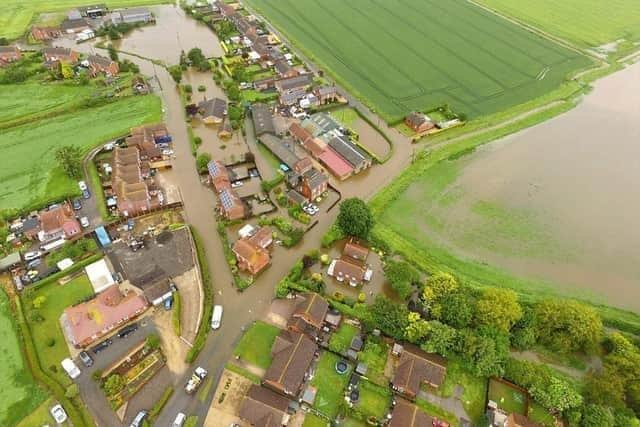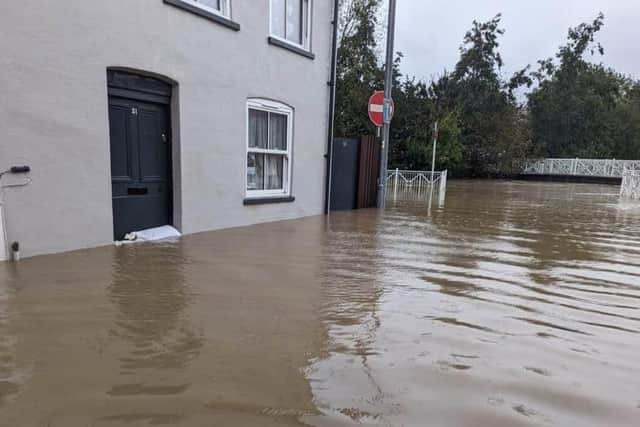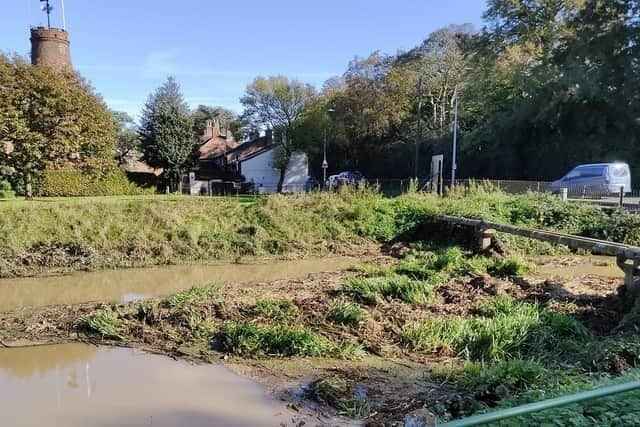Why a fairer funding formula is needed to prevent more flooding misery in East Lindsey


To reduuce the threat in 2024, the leader of East Lindsey District Council Coun Craig Leyland is calling for alternative way to fund the levy to support the area’s drainage boards and keep the pumps pumping.
At times of flooding – as seen most recently in Lincolnshire with Storm Babet – there are stations housing machinery which pump flood water away to help reduce flood risk to homes, businesses and farmland.
Advertisement
Hide AdAdvertisement
Hide AdThese pumping stations play a vital role to help reduce the impact of flooding. Without them working around the clock at times of flooding and high water, we would be lost.


These stations are managed by public bodies called Internal Drainage Boards (IDBs). There are 112 IDBs in England which reduce the flood risk to over 600,000 people and 900,000 properties.
In East Lindsey, the internal drainage boards which serve the district are:
- Lindsey Marsh
- Witham 3rd
- Witham 4th
Some pumping stations are powered by diesel while others are electric-powered. There is no other way to power them.
Advertisement
Hide AdAdvertisement
Hide Ad

Like households and businesses, the IDBs have seen their costs and utility bills increase significantly, with these expecting to rise even more next year.
IDBs are funded from a levy which comes out of the money the council collects in council tax – but this method is impacting on the money that is available for councils to spend on services.
In 2012/13, the IDBs were partially funded by something called a Revenue Support Grant which was given to councils from the Government but that grant has been reduced back. Councils are now having to fund the levy through the money that should be going to providing services such as street cleaning, refuse collection, planning and supporting vulnerable residents.
Coun Craig Leyland, Leader of East Lindsey District Council, said: “There is no doubt that the internal drainage boards do fantastic and vitally important work to protect people and businesses at times of flooding.
Advertisement
Hide AdAdvertisement
Hide Ad"We need them and we need their pumps to keep working to support our district.
“However, there needs to be an alternative way to fund the levy to support our drainage boards.
" Our ability to improve services and support growth is being significantly eroded by this funding method which is unaffordable and unfair.”
This year, East Lindsey’s council tax requirement was £7.496m. 65 per cent of that - £4.888m was for the drainage board levy.
Advertisement
Hide AdAdvertisement
Hide AdFor every £10 of council tax, East Lindsey District Council receives 80p for services. Of that 80p – 52p is having to go to IDBS.
East Lindsey is now part of a group of more than 20 councils all affected by IDB levies which are now campaigning to the Government for a fairer funding method which will ensure the vital work of the IDBs can be protected and that the council uses its council tax for its services.
So far the campaign has seen MPs from all the affected councils lobbied as well as the Chancellor the Rt Hon Jeremy Hunt, the Secretary of State for Levelling Up, Housing and Communities the Rt Hon Michael Gove.
The lobbying is moving at pace and will continue alongside decisions being made over the council’s budget for 2024/25.